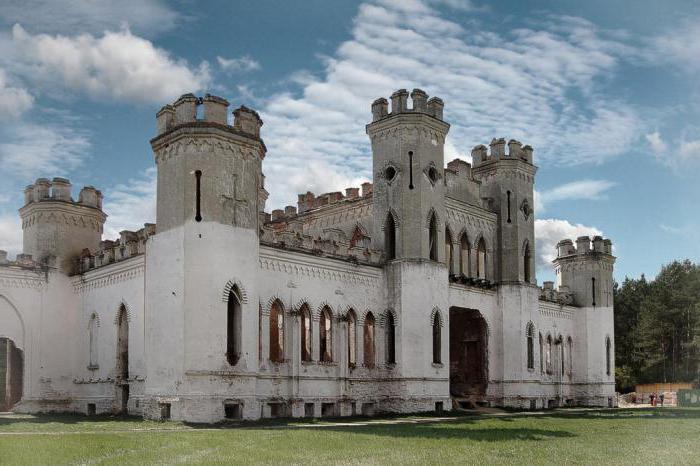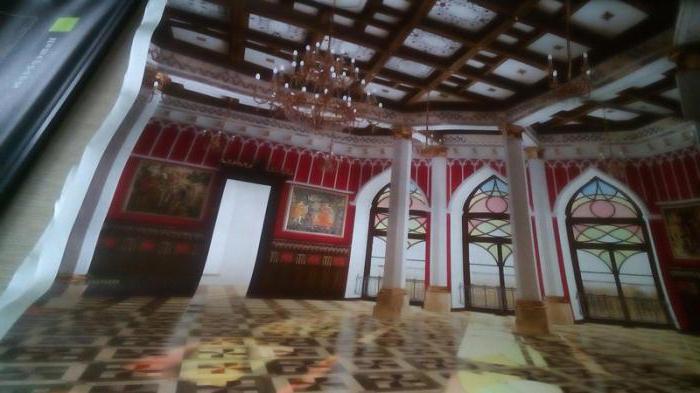Belarus is known for its beautiful places and many attractions, among which, undoubtedly, one of the pearls is the Puslowski Palace in Kossovo. This romantic castle is sometimes called the "chivalrous dream." History was merciless to this beautiful building, and after two wars of the 20th century, which swept through the territory of the long-suffering Belarus, walls and legends remained from it. Now the Puslowski Palace is being intensively restored. He should shine, as before, by 2018.
Clan Puslowski
This family has been known in the Polish-Lithuanian Commonwealth since the 40s of the XVII century. The first was Jacob Puslowski. Pope Pius IX gave them the count title. He was not recognized in Russia.
The portrait, which is presented here, depicts a 19th-century figure Wojciech Puslowski, who began to erect the Puslowski Palace. He is depicted with the Order of St. Anna of the I degree, which was supposed to be worn on the right side of the chest and with a ribbon over the left shoulder. The belt in the picture is not a random detail. It shows the nobility and wealth of its owner. These belts were inherited. Wojciech Puslowski himself was the leader of the nobility of the Slonim district.
Palace construction
Wojciech Puslowski bought the estate back in 1821. The quiet place of Kossovo came to life with him. He set up a carpet factory there, and also began to build and rebuild churches. Cultural and economic life has become energetic and active.
And in 1838, in the small town of Kossovo, on the initiative of Vandalin Puslovsky, the grandiose construction of the castle, which is now called the Kossovsky Puslovsky Palace, was begun. Construction was led by the Polish architect Francis Jaschold. Bricks were brought from abroad. In the solution that was supposed to hold them together, bird eggs and blood were added. Built for centuries on a high bulk mound, and the depression from which they took the land, then turned into a round lake. So an amazing structure was built, the central part of which combines two wings - the right and left.

It is often called a castle, because the narrow lancet windows resemble loopholes, and also because the towers end with battlements. But the castle is intended for military operations, and the Puslowski palace was needed for holidays and celebrations. Each of the twelve towers corresponded to one of the months of the year. Four central towers carried a special semantic load: they meant the most productive months of the year from May to August.
It is them that the Puslowski Palace demonstrates (the photo is in the article).
In addition to them there were three hundred and sixty-five small turrets by the number of days in a year. The Puslowski Palace is built in a neo-Gothic style. The architecture of the castle contains elements of classicism.
Interior decoration
The entire interior was created by the Italian Marconi. In one wing housed an art gallery and a huge library, in which there were over 10,000 volumes. In another part there were living rooms and halls, and there were, by the way, more than one hundred and twenty.

Each room was decorated in a special way, and they differed in color. In the blue room, preparations were underway for the ball, in the pink room they played and sang. Balls were held in the White Hall. And in the Main Hall, as they say, the floor was made of double glass, and exotic fish swam between the seaweed. Most likely, the floor was heated, but this is still being studied. In a black room, the walls of which were lined with marble, men gambling, and women were not allowed to enter there. In the mirror hall, which was the dining room, the walls and ceiling were decorated with mirrors that had been brought from Italy. There were also silver, and golden, and glass rooms. Each of them was illuminated by the sun for 2.5 days a year - the architect so ingeniously designed them. According to legend, as soon as the sun entered the room, the Puslovskys arranged a holiday in it, decorating the "birthday girl".
What was still in the interior of the palace
Of course, in the center there was a winter garden. At night, the owners released the lion. This guard prevented theft: all the servants sat in their premises and did not go anywhere.
Here in the central part there was an unusual musical wall. A staircase without a railing went along it, and willy-nilly had to adhere to the wall, and then it began to sound melodic. It turns out that pots were built into the wall, similar to what they do in churches to improve acoustics. It was in them that bones were poured, which even with the touch of a fluffy skirt began to make sounds, welcoming the guest and warning the owners that someone was walking up the stairs.
Underground Legend
Of course, if there is a castle, then it just has to have an underground passage. And now the people walk the story that between the palace in Kossovo and the Ruzhany castle there was an underground passage, along which the owners rode in carriages. Perhaps this is a myth, like the ghosts that inhabited the English castles.
Palace Park
The palace was surrounded by a terrace park with fountains and a greenhouse, in which more than one hundred and fifty species of rare plants were planted. He went down to three artificially created lakes.
Change of ownership
After the death of Vandolin, the estate was inherited by his son Leonid. This is a sad period. The Kossovsky castle was empty . The Puslowski Palace was lost in cards and became the property of the merchant Aleksandrov. Then the estate passed to Anna Trubetskoy. She also parted with him: she presented it to Princess Abamelek, and she, in turn, sold it to the prince of Oldenburg. In 1914, during the war, the palace was completely looted, and the garden and the greenhouse were destroyed. In 1921, these lands belonged to Poland. The castle housed the local government, and then - the beekeeping school. The palace was especially affected during the years of the Nazi Germany attack.
And then the palace was generally neglected to such an extent that a young forest grew around it, which completely hid it.
How to get to the palace
A bus goes to Kossovo from Minsk. The road takes 4 hours. You can use the train (to Ivantsevichi). By private car you should go along the M1 / E30 highway, and in Ivantsevichi turn onto the P44 highway, which leads to Kossovo.
Current state
Since 2008, the palace has been undergoing restoration. Its end is scheduled for 2018. Everyone is looking forward to the appearance of a new large tourist center in Belarus.